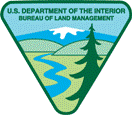United States Department of the Interior

United States Bureau of Land Management: Staff Publications
Date of this Version
2002
Abstract
When President Nixon signed the Endangered Species Act (ESA) into law in 1973, it is unlikely that anyone imagined the pivotal role it would play in a wide range of land and water management decisions. There are now over 1,200 species of plants and animals listed as threatened or endangered in the United States. Certain areas of the country that historically have had a great diversity of species are now home to large numbers oflisted plants and animals. California, for example, has 292 listed species, and Alabama has 125. In some areas, every major land and water management decision or action involves an endangered species issue at some point.
Over time, the ESA has evolved, so it is no longer simply about protecting imperiled species from extinction. It has become the backdrop against which we balance economic activity and recreation against the conservation of plants and animals and their habitat. In the process, it has pitted landowners and water users against species, the West versus the East. It has resulted in economic hardship and controversy in some areas. And, it has created a federal bureaucracy that often is perceived to care more about plants and animals than humans. Because of this, we have missed opportunities to develop the partnerships with states and landowners that can achieve significant benefits for species-and their habitat.


Comments
Published in TRANSACTIONS OF THE SIXTY-SEVENTH NORTH AMERICAN WILDLIFE AND NATURAL RESOURCES CONFERENCE, 2002, ed. Jennifer Rahm (Washington, DC, 2002)